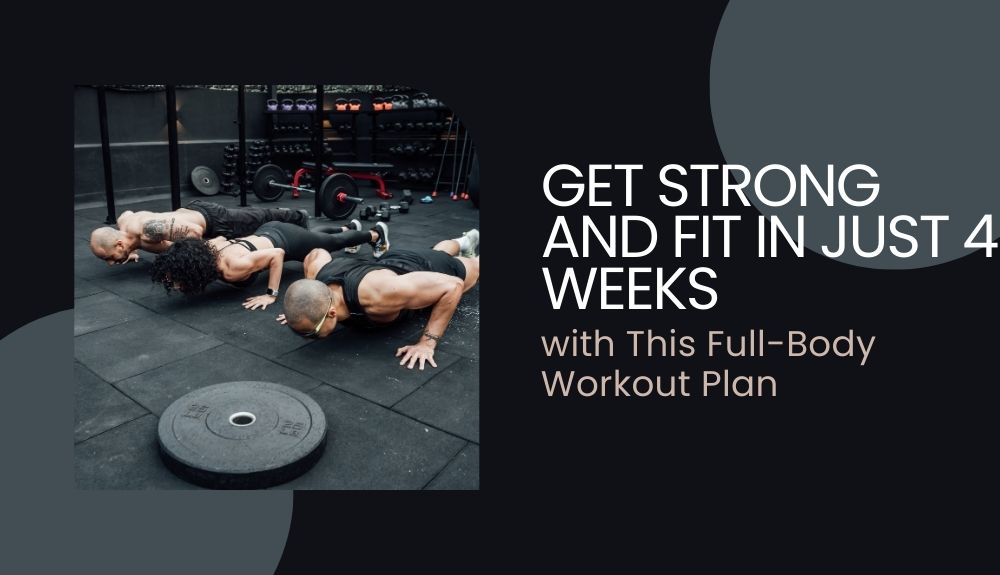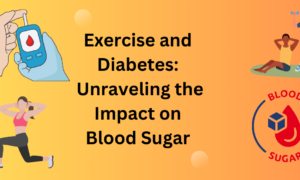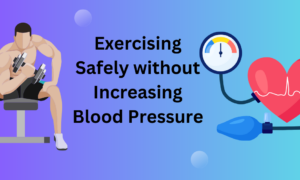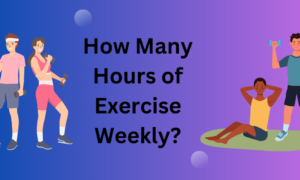Are you tired of struggling to find time for your fitness goals amidst a busy schedule? Look no further. With our 4-week full-body workout plan, you can kick-start your fitness journey and achieve optimal results without compromising on your daily commitments.
This comprehensive plan combines strength training and cardiovascular exercises to target all major muscle groups and help you build strength, enhance endurance, and burn calories effectively. Designed especially for busy professionals like you, this workout plan offers time-efficient strategies to ensure that you can fit exercise into your hectic routine.
Not only will you find exercises that focus on specific muscle groups and help you achieve your fitness goals, but you’ll also discover tips on balancing fitness with a busy schedule, effective strategies for weight loss and muscle growth, and expert advice on maintaining a consistent workout routine. Whether you’re a beginner or an experienced fitness enthusiast, this full-body workout plan has something for everyone.
So, are you ready to get strong and fit in just 4 weeks? Say goodbye to the struggle and hello to a healthier, fitter you. Let’s dive into the details of this transformative workout plan and take the first step towards a stronger, more energized lifestyle.
Introduction to the Importance of Full-Body Workouts
Full-body workouts play a crucial role in achieving fitness goals, especially for busy professionals who struggle to find time for exercise. These workout routines are designed to target all major muscle groups, providing a comprehensive approach to fitness. By engaging multiple muscle groups in one session, full-body workouts offer time-efficient solutions for individuals with tight schedules.
One of the key benefits of full-body workouts is their ability to burn more calories compared to isolation exercises. With compound movements such as squats, deadlifts, and push-ups, you engage multiple muscle groups simultaneously, resulting in a higher calorie expenditure. This makes full-body workouts an effective strategy for weight loss or maintaining a healthy body composition.
Additionally, full-body workouts improve overall strength and endurance. By challenging your body as a whole, you develop balanced muscle growth and enhance your functional fitness. This can be particularly beneficial for busy professionals who need physical strength to keep up with their demanding careers.
Incorporating full-body workouts into your fitness routine promotes better muscular endurance, flexibility, and cardiovascular health. These exercises stimulate muscle fibers and improve oxygen delivery to the working muscles, leading to overall enhanced performance.
Overall, full-body workouts offer an efficient and effective way for busy professionals to achieve their fitness goals, allowing them to make the most out of their limited time. Whether your goal is weight loss, muscle growth, or general fitness, incorporating full-body workouts into your routine can bring you closer to achieving optimal results.
Understanding the Challenges of Balancing Fitness and a Busy Schedule
Maintaining a regular exercise routine can be challenging, especially for busy professionals with demanding schedules. Balancing work commitments, family responsibilities, and social obligations often leaves little time for physical fitness. However, prioritizing health and incorporating exercise into a busy lifestyle is crucial for overall well-being. In this section, we will address the common challenges faced by busy professionals and provide practical tips on how to effectively integrate exercise into daily routines.
Time Constraints:
One of the main obstacles faced by busy professionals is the lack of time. Long working hours, commuting, and other obligations leave limited opportunities for exercise. To overcome this challenge, it’s essential to identify time slots that can be dedicated exclusively to physical activity. Consider waking up earlier in the morning to complete a workout or utilizing lunch breaks for a quick exercise session. Short and intense workouts can be just as beneficial as longer ones, so focus on quality rather than quantity.
Prioritization:
Another challenge is prioritizing fitness amidst competing demands. It’s important to recognize that taking care of one’s health is not a luxury but a necessity. By acknowledging the significance of regular exercise, you can reframe it as an essential part of your daily routine. Treat it as a non-negotiable commitment, just like any other work or personal obligation.
Lack of Motivation:
Busy schedules can often lead to exhaustion and reduced motivation for exercise. Finding the drive to work out after a long day can be tough. The key is to identify activities that you find enjoyable and incorporate them into your fitness routine. Whether it’s a group fitness class, outdoor activities, or trying new exercises, finding something that excites you will increase your motivation and make exercise more sustainable.
Planning and Preparation:
A lack of planning and preparation can hinder your ability to incorporate exercise into your busy schedule. To overcome this challenge, set aside time each week to plan your workouts. Determine the specific days and times that work best for you, and schedule them into your calendar as you would any other important appointment. Additionally, prepare your workout gear and equipment in advance to minimize any last-minute obstacles.
Flexibility and Adaptability:
Lastly, it’s important to acknowledge that life is unpredictable. Unexpected work-related tasks, family emergencies, or other unforeseen events can disrupt your workout plans. Being flexible and adaptable is crucial in these situations. If your planned workout is no longer feasible, find alternative ways to be physically active, such as taking a brisk walk during breaks or performing quick exercises at home. Remember that consistency over time is more important than achieving perfection in every workout session.
By understanding and addressing these challenges head-on, busy professionals can successfully balance fitness with their demanding schedules. Prioritizing exercise and making it a non-negotiable part of your routine will not only improve your physical health but also enhance your overall well-being.
The 4-Week Full-Body Workout Plan Overview
Welcome to the 4-week full-body workout plan designed specifically for busy professionals like you. This comprehensive program combines strength training and cardiovascular exercises to help you achieve your fitness goals without compromising your hectic schedule.
The main objective of this workout plan is to target all major muscle groups, improve strength and cardiovascular fitness, and promote overall body toning. By focusing on full-body exercises, you’ll optimize your workout time and ensure that no muscle group is neglected.
Throughout the 4 weeks, you will follow a structured routine that gradually increases in intensity, allowing your body to adapt and progress. Each week will have its specific focus, targeting different areas and aspects of fitness. You’ll also find variety in the exercises to keep you engaged and motivated.
Some key components of this workout plan include compound exercises, which involve multiple muscle groups, and rep schemes that promote muscle growth and endurance. Additionally, we will incorporate cardiovascular exercises to improve your stamina and overall fitness level.
Remember, consistency is key when it comes to achieving your fitness goals. Stick to the program, listen to your body, and make modifications as needed. Are you ready to embark on this journey and transform your body in just 4 weeks? Let’s get started!
Warming Up and Preparing for the Workouts
Before diving into the intense full-body workouts, it is crucial to warm up your muscles to prevent injuries and maximize performance. A proper warm-up not only increases blood flow but also improves mobility, flexibility, and range of motion. Here are some warm-up exercises to incorporate into your routine:
1. Dynamic Stretching: Perform exercises like leg swings, arm circles, and torso twists to loosen up your joints and increase mobility.
2. Cardiovascular Activation: Spend 5-10 minutes performing light cardio exercises such as jogging, jumping jacks, or cycling to raise your heart rate and warm up your entire body.
3. Foam Rolling: Use a foam roller to target tight muscles and release tension. Roll along your calves, hamstrings, quads, and upper back to alleviate any knots or trigger points.
4. Activation Exercises: Engage specific muscle groups with activation exercises. For example, perform glute bridges to activate your glutes or shoulder rotations using resistance bands to activate your shoulder muscles.
Remember, the warm-up should be dynamic and prepare your body for the upcoming workout. Take around 10 minutes to complete these exercises, ensuring that you break a light sweat. By warming up properly, you’ll enhance your performance and minimize the risk of injuries during the full-body workouts.
Week 1: Full-Body Strength Training

In the first week of this 4-week full-body workout plan, the focus is on building strength throughout your entire body. Incorporating a variety of exercises that target different muscle groups, this week’s workouts aim to lay a solid foundation for the rest of the program. It is important to perform each exercise with proper form and technique to maximize results and minimize the risk of injury.
Warm-up (5 minutes)
Before starting the strength training exercises, it is crucial to warm up your muscles and prepare your body for the workout. Spend at least 5 minutes engaging in dynamic stretches and light cardiovascular activities such as jogging or jumping jacks. This will increase blood flow to your muscles and help prevent injuries.
Exercise 1: Barbell Squats (3 sets, 8-10 reps)
Barbell squats are a compound exercise that targets multiple muscle groups, including your quadriceps, hamstrings, glutes, and core. Start by placing a barbell on your upper back, with your feet shoulder-width apart. Lower your body down into a squat position, keeping your back straight and your knees aligned with your toes. Push through your heels to return to the starting position.
Exercise 2: Dumbbell Bench Press (3 sets, 8-10 reps)
The dumbbell bench press is a great exercise for strengthening the chest, shoulders, and triceps. Lie down on a bench with a dumbbell in each hand, palms facing forward. Extend your arms straight above your chest and slowly lower the dumbbells towards your chest. Push them back up to the starting position by extending your arms.
Exercise 3: Bent-Over Rows (3 sets, 8-10 reps)
Bent-over rows target the back muscles, particularly the lats and rhomboids. Stand with your feet shoulder-width apart, holding a dumbbell in each hand. Hinge forward at the hips, keeping your back straight and your core engaged. Pull the dumbbells towards your chest, squeezing your back muscles at the top of the movement. Slowly lower the dumbbells back down.
Exercise 4: Romanian Deadlifts (3 sets, 8-10 reps)
Romanian deadlifts primarily work the muscles in your posterior chain, including the glutes, hamstrings, and lower back. Start by holding a barbell or dumbbells in front of your thighs, with your feet hip-width apart. Hinge forward at the hips, keeping your back straight and your core tight. Lower the weight down towards the ground, maintaining a slight bend in your knees. Engage your glutes and hamstrings to return to the starting position.
Exercise 5: Plank (3 sets, 30-60 seconds)
Planks are a fantastic exercise for strengthening your core muscles, including your abs, obliques, and lower back. Start in a push-up position, with your hands directly below your shoulders and your body in a straight line from head to toe. Engage your core and hold this position for the prescribed amount of time. If needed, you can modify the exercise by lowering onto your forearms.
Remember to rest for about 60 seconds between each set of exercises to allow your muscles to recover. As you progress through the week, aim to increase the weight or intensity of each exercise gradually. Stay consistent, and make sure to maintain proper form throughout each movement. This full-body strength training routine will set the stage for the upcoming weeks of this program, helping you become stronger and more fit.
Week 2: Cardiovascular Endurance and Core Work
In the second week of this 4-week full-body workout plan, the focus is on improving cardiovascular endurance and strengthening the core. Incorporating a combination of cardio exercises and core strengthening movements, this week’s workouts will help you boost your stamina and tone your midsection.
Warm-Up (10 minutes)
Before starting the workouts, it’s essential to warm up your muscles and prepare your body for exercise. Spend at least 10 minutes performing dynamic stretches and light cardio exercises to increase your heart rate and loosen up the joints. Examples of warm-up exercises include:
– Jumping jacks
– High knees
– Butt kicks
– Arm circles
Cardiovascular Endurance (20 minutes)
Cardiovascular exercises elevate your heart rate and improve your overall endurance. Choose any cardio activity that you enjoy and perform it for 20 minutes. Some options include:
– Running or jogging on a treadmill or outdoors
– Cycling on a stationary bike or outdoors
– Jumping rope
– Swimming
– HIIT (High-Intensity Interval Training) workout
Remember to gradually increase the intensity and duration of your cardio sessions as your fitness level improves. Listen to your body and adjust the intensity based on your comfort level.
Core Strengthening (20 minutes)
A strong core is essential for stability, balance, and overall functional fitness. In this workout, you’ll target the muscles of your abs, obliques, and lower back. Perform each exercise for the prescribed number of reps or time. Take short breaks between exercises if needed.
1. Plank: Hold the plank position for 30 seconds to one minute, focusing on engaging your core muscles while maintaining a straight line from head to toes.
2. Bicycle Crunches: Lie on your back, bring your knees up, and place your hands behind your head. Alternate bringing your right elbow towards your left knee while extending your right leg and vice versa.
3. Russian Twists: Sit on the floor with your knees bent and feet flat on the ground. Lean back slightly and lift your feet off the floor. Twist your upper body from side to side, touching the floor on each side with your hands.
4. Mountain Climbers: Get into a push-up position, bring one knee towards your chest, then quickly switch legs in a running motion.
5. Plank Hip Dips: Start in a side plank position, with your elbow directly under your shoulder and your body in a straight line. Lower your hip towards the floor, then return to the starting position. Repeat on the other side.
6. Superman Hold: Lie face down on the floor with your arms extended in front of you. Lift your arms, chest, and legs off the ground simultaneously, holding the position for a few seconds before lowering back down.
Remember to engage your core muscles during each exercise and maintain proper form throughout the workout. As you progress, you can increase the number of sets or reps to continue challenging your muscles.
Conclusion
In week 2 of this 4-week full-body workout plan, you’ve incorporated cardiovascular exercises to improve your endurance and core strengthening movements to develop a strong midsection. Consistency and proper form are key to achieving optimal results. Stay motivated, push yourself within your comfort zone, and get ready for week 3, where you’ll focus on muscle building and conditioning.
Week 3: Muscle Building and Conditioning
In week 3 of this 4-week full-body workout plan, our focus will be on building lean muscle mass and improving overall conditioning. By incorporating a combination of strength training exercises and conditioning workouts, you’ll progress in your fitness journey and continue to see results.
Workout Plan
1. Compound Exercises (3 sets of 10-12 reps):
– Barbell Squats
– Dumbbell Bench Press
– Bent Over Rows
– Overhead Press
2. Isolation Exercises (3 sets of 12-15 reps):
– Dumbbell Bicep Curls
– Tricep Dips
– Lateral Raises
– Leg Curls
3. Supersets (3 sets of 10-12 reps each exercise):
– Incline Dumbbell Press with Dumbbell Flyes
– Lat Pulldowns with Cable Rows
– Leg Press with Calf Raises
4. Conditioning Workouts (30 minutes):
– High-Intensity Interval Training (HIIT) on the treadmill or stationary bike
– Jumping Jacks
– Mountain Climbers
– Medicine Ball Slams
Tips for Maximum Results
– Focus on using proper form and technique for each exercise to prevent injury and maximize muscle engagement.
– Gradually increase the weights used for each exercise as you gain strength and improve. This progressive overload will stimulate muscle growth.
– Don’t forget to incorporate rest days into your training schedule. Rest and recovery are essential for muscle repair and growth.
– Maintain a balanced diet that includes adequate protein to support muscle building goals.
– Stay hydrated before, during, and after your workouts to maintain optimal performance.
– Listen to your body and adjust the workout intensity or exercises if needed. If an exercise causes pain or discomfort, seek guidance from a qualified fitness professional.
Remember, consistency and dedication are key to reaching your fitness goals. Stay committed to the workout plan and trust the process. In the next and final week, we will focus on circuit training and flexibility to ensure a well-rounded fitness routine.
For more tips and guidance, consult with a certified fitness professional who can tailor the workout plan to your individual needs and goals.
Keep pushing yourself, and congratulations on completing week 3 of the full-body workout plan!
Week 4: Circuit Training and Flexibility
In the final week of our 4-week full-body workout plan, we’ll focus on circuit training exercises and flexibility training to achieve a well-rounded fitness routine. Circuit training is a time-efficient way to combine cardiovascular and strength exercises, while flexibility training helps improve range of motion and prevent injuries. Let’s dive into the detailed workout plan for this week:
Circuit Training:
Perform each exercise back-to-back, with minimal rest between exercises. Rest for 1-2 minutes after completing one full circuit. Aim to complete 3 circuits.
1. Jumping Jacks (30 seconds):
– Stand with feet together and arms by your sides.
– Jump, spreading your legs shoulder-width apart and raising your arms overhead.
– Return to the starting position and repeat.
2. Push-Ups (12 reps):
– Start in a high plank position with hands slightly wider than shoulder-width apart.
– Lower your body until your chest touches the floor, keeping your elbows close to your sides.
– Push back up to the starting position and repeat.
3. Squat Jumps (15 reps):
– Stand with feet hip-width apart.
– Lower into a squat position, then explosively jump as high as you can.
– Land softly and immediately lower into another squat.
4. Mountain Climbers (30 seconds):
– Start in a high plank position with hands directly under your shoulders.
– Alternate bringing one knee into your chest while keeping the other leg extended.
– Continue switching legs in a running motion.
Flexibility Training:
Perform each stretch for 20-30 seconds on each side.
1. Standing Forward Fold:
– Stand with feet hip-width apart.
– Slowly bend forward from the hips, reaching towards your toes.
– Allow your head and neck to relax.
2. Standing Quad Stretch:
– Stand tall and bring your left heel towards your glutes, grabbing your foot with your left hand.
– Keep your knees close together and maintain balance.
– Repeat with the right leg.
3. Child’s Pose:
– Start on your hands and knees, then sit back onto your heels.
– Extend your arms forward and rest your forehead on the mat or floor.
– Relax your body and breathe deeply.
Remember to cool down and stretch after each workout session to promote recovery and reduce muscle soreness. Keep challenging yourself throughout the week by increasing the intensity or modifying exercises when needed.
Congratulations on completing the 4-week full-body workout plan! By incorporating circuit training and flexibility exercises, you’ve worked on cardiovascular endurance, strength, and mobility. Don’t forget to track your progress and make necessary adjustments to your workout routine as you continue on your fitness journey. Remember, consistency and dedication are key to achieving your fitness goals. Keep up the great work!
Tips for Proper Form and Safety
When it comes to maximizing the effectiveness of your workouts and preventing injuries, maintaining proper form and safety is crucial. Here are some essential tips to keep in mind:
1. Start with a Warm-Up
Before jumping into your full-body workout, it’s important to warm up your muscles and prepare your body for the exercises ahead. Engage in dynamic stretches or light cardio exercises to increase your heart rate and loosen up your muscles.
2. Focus on Proper Alignment
Maintaining the correct alignment throughout each exercise is key to target the intended muscle groups and avoid unnecessary strain on your joints. Keep your spine neutral, shoulders back and down, and engage your core for stability.
3. Control Your Movements
Instead of rushing through the exercises, focus on controlled and deliberate movements. This not only helps to engage the targeted muscles effectively but also reduces the risk of injury caused by jerky or uncontrolled motions.
4. Pay Attention to Breathing
Breathing properly during your workouts can help oxygenate your muscles and improve your overall performance. Inhale during the eccentric or lowering phase of the exercise, and exhale during the concentric or exertion phase.
5. Use Appropriate Weight and Resistance
Choose weights or resistance levels that challenge you but still allow you to maintain proper form. Avoid using weights that are too heavy, as it can lead to compromised form and increase the risk of injury.
6. Listen to Your Body
Pay attention to any discomfort or pain during the exercises. If something doesn’t feel right, modify the movement or consult with a fitness professional to ensure you are performing the exercises correctly.
7. Take Rest Days
Rest days are essential for muscle recovery and minimizing the risk of overuse injuries. Incorporate rest days into your workout schedule to allow your body time to repair and rebuild.
Remember, safety should always be a priority when engaging in any physical activity. Following these tips will not only help you achieve your fitness goals but also ensure that you stay injury-free throughout your 4-week full-body workout plan.
Progress Tracking and Adjustments

Tracking your progress and making adjustments to your workout plan are essential for maximizing your results and achieving your fitness goals. Here are some key reasons why progress tracking and adjustments are important:
1. Motivation: Tracking your progress allows you to see how far you’ve come and can provide the motivation you need to keep pushing forward. Celebrate your victories, whether it’s lifting heavier weights, running faster, or performing more reps.
2. Identifying Plateaus: By tracking your progress, you can identify when you hit a plateau, where your progress slows down or stagnates. Plateaus are a sign that it’s time to introduce changes to your routine, such as modifying exercises, increasing weights, or adjusting rep ranges.
3. Preventing Overtraining: Monitoring your progress helps you identify signs of overtraining, such as decreased performance or excessive fatigue. Adjusting your workouts accordingly, whether it’s reducing volume or incorporating rest days, can prevent burnout and injuries.
4. Customization: Tracking your progress allows you to customize your workout plan based on your individual needs and goals. By analyzing your results, you can adjust the intensity, frequency, and duration of your exercises to optimize your progress and address specific weaknesses.
Remember to regularly assess your progress through methods like recording weights lifted, measuring body measurements, or completing fitness assessments. Making small, strategic adjustments to your workout plan based on your progress will keep you on track towards achieving your desired fitness level.
Conclusion and Final Thoughts
In conclusion, the 4-week full-body workout plan is an excellent option for busy professionals seeking to achieve their fitness goals while juggling a hectic schedule. This comprehensive program combines strength training and cardiovascular exercises to target all major muscle groups and maximize results. By dedicating just a few hours each week to these workouts, individuals can make significant strides towards their fitness aspirations.
The benefits of this workout plan are numerous. Firstly, it saves time by targeting multiple muscle groups simultaneously, allowing for efficient full-body workouts. This is especially beneficial for those with limited free time. Secondly, the combination of strength training and cardiovascular exercises helps with both weight loss and muscle growth. This means that individuals can achieve a leaner and more toned physique.
Importantly, incorporating fitness into a busy schedule is a challenge that many professionals face. However, prioritizing physical activity has numerous benefits, including increased energy levels, improved mood, and enhanced productivity. With the 4-week full-body workout plan, busy professionals can overcome the obstacles of time constraints and make their fitness a priority.
So, don’t let your busy schedule hold you back from achieving your fitness goals. Prioritize self-care and commit to this 4-week full-body workout plan. Remember, consistency is key, and the results will be well worth the effort. Get started today and reap the rewards of a stronger and healthier body.





















